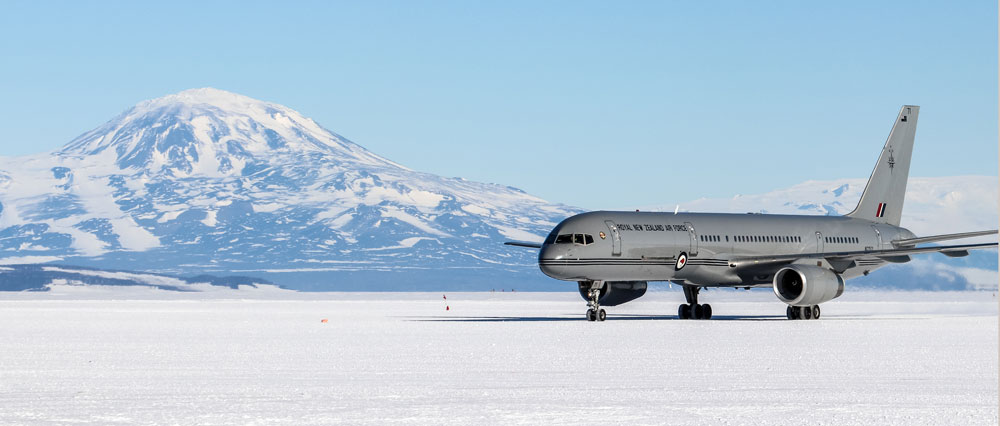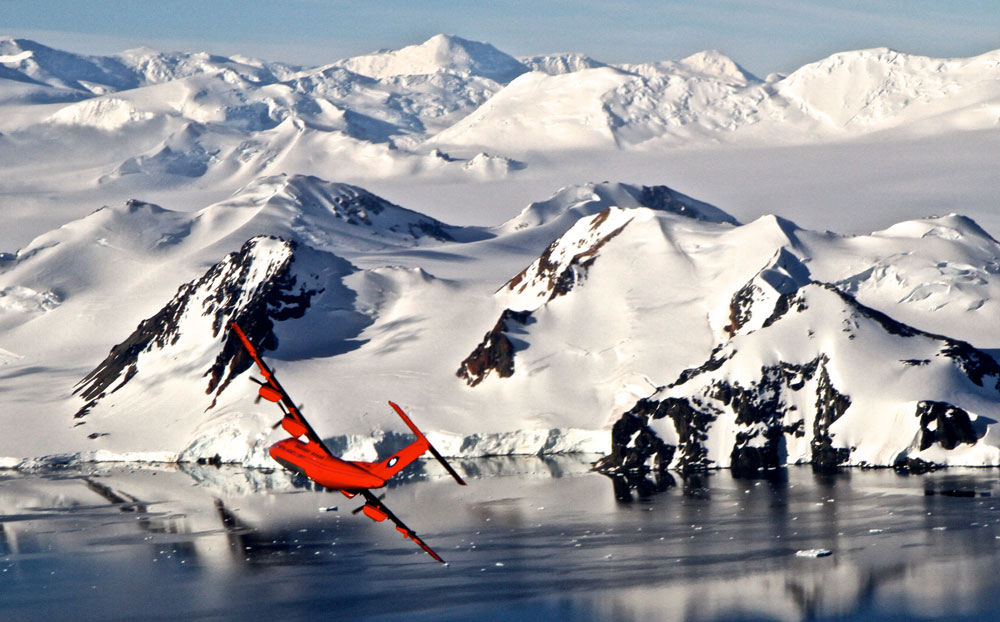AIR TRANSPORT Antarctic air links
Frozen flight
Air links are an essential part of supporting scientific and, increasingly tourism in the Antarctic. ALAN DRON looks at the operators flying in the South Pole and plans to enhance airfield infrastructure.
 RNZAF Boeing 757-200 in Antarctica. NZ Defence Force
RNZAF Boeing 757-200 in Antarctica. NZ Defence Force
For aircrew accustomed to the closely controlled conditions of European or North American airspace, flying into Antarctica is a very different experience. No air traffic control, few navigational aids and runways composed of sheet ice or compacted snow.
However, flights into the white wilderness are more common than one might think. Increasingly in recent years, large commercial aircraft have operated below 60 degrees south, mainly to provide personnel rotation and supplies for scientific outposts.
Cape Town is the jumping-off point for many such flights. Some idea of the distances involved can be gained from the fact that it is a four-hour journey south to the edge of Antarctica and typically another hour to reach the appointed landing strip.
These services entail strict operating conditions. Boeing 767s, which have been used by several carriers for Antarctic flights, have sufficient fuel capacity to undertake a return trip from Cape Town. The smaller Boeing 757, also used by several operators, does not, and would be in difficulty if it got as far as Antarctica, only to learn of a problem with the ice runway.
This necessitates calculating a go/no-go point on the outbound leg, a factor that came into play on one service operated by UK-based charter specialist Titan Airways. It was told only shortly before departure (for security reasons) from Cape Town that an unexpected VIP group, including former US Vice-President Al Gore, now an environmentalist, would be joining the flight. “On this occasion, the weather was not as favourable as previous visits but was sufficient to meet our required departure criteria,” recalled Titan’s Flight Operations Director Joe Dennett, one of the pilots involved.
However, en route, conditions in Antarctica started to deteriorate. Fast approaching the predetermined decision point, news of poor weather and high winds made landing there potentially dangerous: “We had to make the decision to turn back and land in Cape Town.”
Titan has made several trips on behalf of Cape Town-based Antarctic Logistics Centre International (ALCI) and some of the Russian research stations on the continent. Supplies are airlifted to a central point, then distributed by smaller aircraft to bases around Antarctica. Typical loads include food, bedding, medical supplies and vehicle spare parts.
Considerable planning precedes such trips. “Risk assessment was quite extensive and had to take a number of things into account, including fire and rescue capabilities, ability of the aircraft to sit on the ground in sub-zero temperatures and crew welfare, including safety and survival training,” said Dennett.

